The History of U 581
Construction and commissioning
U 581 was a type VII C boat and thus a sister boat of the much more popular U 96, which was ordered from Blohm & Voss in Hamburg on January 8,1940. On 25 September, construction work began under the serial numbers 557 or 81 after a new numbering from U 575 onwards. The launch took place on 12 June and the commissioning ceremony on 31 July by its future Commander Kapitänleutnant (Lieutenant-Commander) Werner Pfeifer.
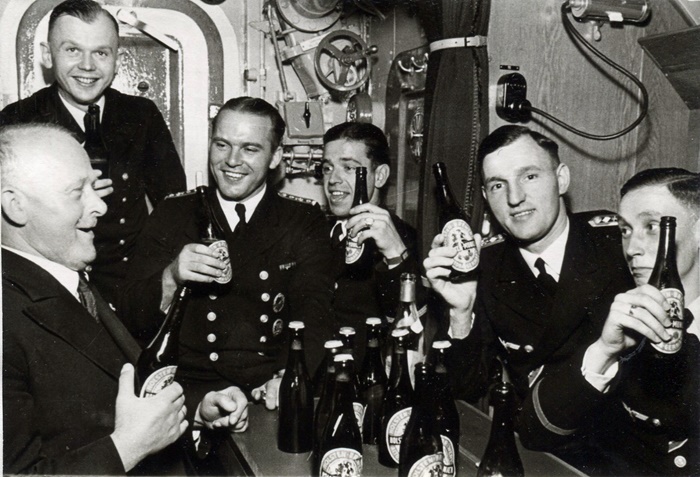
Acceptance trials and training in the Baltic Sea
Immediately assigned to the 5th flotilla after its commissioning, U 581 underwent the eight-day acceptance trials by the UAK in Kiel, where it was also tested in the pressure dock in the river Schwentine. It then moved to the eastern Baltic Sea for training and testing. Few crew members had U-boat experience at that time. According to statements by prisoner-of-war U-boat crews, U 581 initially called at Gdansk because the commander wanted to spend a day on land while the crew had to stay in the base. After a short night-training in Hela, tactical exercises were carried out from Gotenhafen, with special emphasis on alarm diving. Crew members later reported 30-40 training alarms on a single day. It has also been reported that the Chief Engineer has been very enthusiastic in checking the U-boat’s facilities.
After completing its training and testing, U 581 traveled to Kiel via Warnemünde, where torpedo exercises were carried out for three days. At Kiel it was docked for repairs on the engine oil pumps as well as the replacement of a cylinder head for 3-4 weeks at the Kriegsmarine shipyard. According to later statements of the crew in captivity, they were not allowed to go on leave while the commander drove almost daily to his family in Plön, which led to annoyance under the crew.
In mid-December, U 581 was ready to go into action. It was assigned to the 7th U-flotilla. Beside the emblem of the 7th U-Flotilla, the bull of Scapa Flow, U 581 wore a crab louse as a special boat emblem. During the construction instruction period at Blohm & Voss, the Chief Engineer and a considerable part of the crew were infested by them.
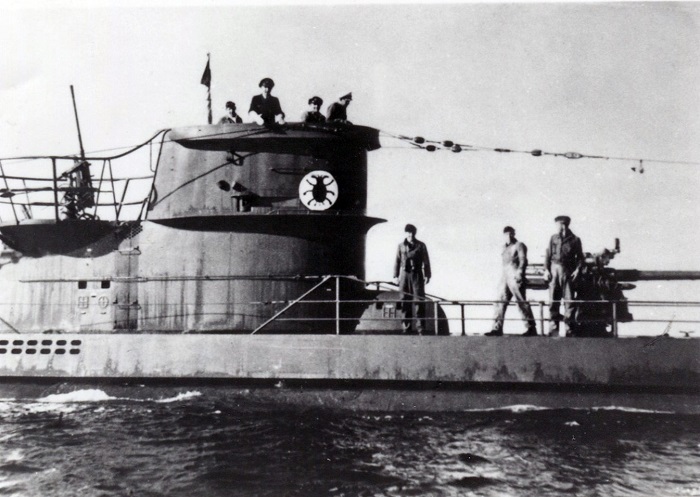
First patrol
On 13 December 1941, U 581 set sail for his first patrol from Kiel. It passed the Skagerrak as well as the North Sea and broke through into the Atlantic Ocean between the Shetland and Faroe Islands. Around midday of 19 December 1941, U 581 sighted a single steamer which was estimated at approx. 4,000 GRT. It moved to an attack position, dived to periscope depth and fired two torpedoes from tube I and II, but failed to hit the target. When U 581 surfaced almost two and a half hours later after reloading the torpedoes, the steamer was out of sight and could not be found again, so that U 581 continued its patrol according to its operation orders. On Christmas Eve of 1941, the boat entered its new base in St. Nazaire without any success. The BdU wrote in its statement that this was the first venture and transfer voyage of a new U-boat. He criticizes the commander’s actions during the attack on the steamer on 19 December, which would have offered a rarely favorable chance of success.
Second patrol
After a little more than two weeks of shipyard overhaul at the St. Nazaire Kriegsmarine shipyard, U 581 left on 11 January 1942 for its second patrol, which was to lead it off the coast of Newfoundland as part of Operation Paukenschlag. Already on the second day at sea the boat had ground contact during a test alarm and damaged its rudder. The damage turned out to be so slight that the patrol could be continued.
On 19 January at 11 pm a warship was sighted about 400 nm east of the Azores, which was addressed as a corvette of about 800 tons. It was a very dark night with some rainfall. U 581 first fired a single torpedo, then two more, from which one torpedo hit the ship midships and immediately sunk it. Research after the war revealed that this might have been the HMS Rosemonde, a 364 ton Admiralty trawler lost on the trip from the British Isles to Gibraltar.
The Llangibby Castle
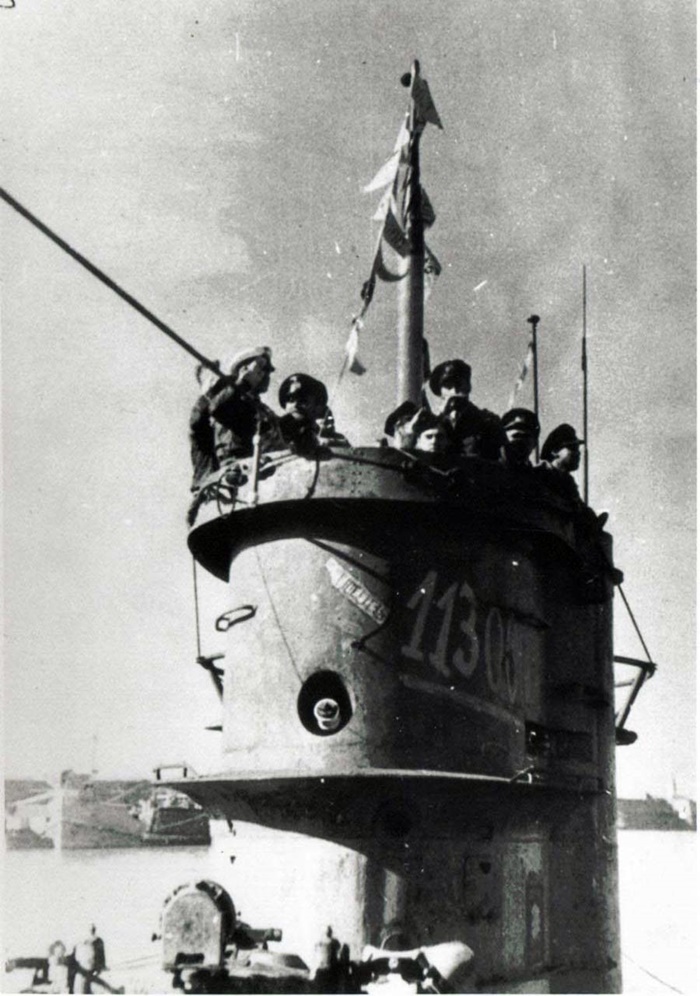
On 16 January 1942 U 402 under Kapitänleutnant (Lieutenant-Commander) Siegfried Freiherr von Forstner damaged the 11,951 t British troop transport Llangibby Castle. It was part of the WS-15 convoy, which consisted of 20 ships and 3 escorts, including the well-known Laconia. The fast, purely military WS convoys brought troops and material from England via Freetown and the Cape of Good Hope to the Middle East, India and the Far East. A U 402 torpedo hit the Llangibby Castle at the stern and destroyed the rudder and the aft gun, but left the propellers intact. 26 sailors were killed.
Four days later, the Llangibby Castle, which could only be controlled by the engines, after having to defend itself against repeated attacks by German FW-200 long-range aircraft, trudged to the neutral Portuguese port of Horta on the Azores island of Fayal. The Portuguese government granted the ship 14 days to carry out repairs before the ship had to sail again or be interned.
Hunting the Llangibby Castle
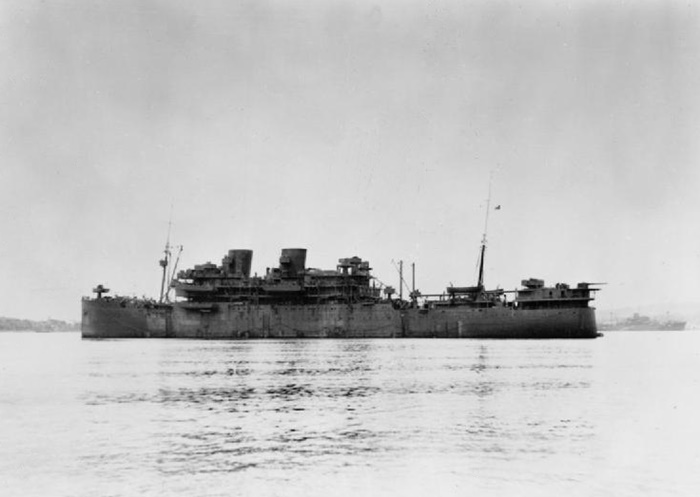
U 581 was ordered by the BdU to proceed to the Azores and meet there with U 402 to attack and sink the Llangibby Castle on its departure. On January 31, U 581 reached the Azores and entered the port of Horta that same night. The Llangibby Castle was spotted there, but was behind a massive stone pier that made an attack impossible, so the U-boat withdrew again.
U 581 spent the course of the day on 01 February out of sight of land. At 02.00 am on 02 February U 402 came in sight. After exchanging recognition signals, both U-boats went alongside each other. The two commanders discussed the further joint action. U 402 should go to the northern exit of the strait between Pico and Fayal while U 581 should remain in front of the port.
The sinking of U 581
A few hours later 3 British destroyers and a tugboat appeared in front of the harbor of Horta. U 581 dived immediately and fired a torpedo from the stern tube at the nearest destroyer which missed its target by far. When U 581 then, in order to avoid being located by the enemy, plunged to a depth of 80 m, water entered via the exhaust pipe of the port side diesel engine. Within a short time, about 10 tons of water flooded into the boat, which could only be kept on a reasonably even keel with the electric engines running at full speed and the hydroplanes being set upwards. A possibly occurring posture heavy to the stern and thus the running of the water from the diesel compartment into the electrical engine room would have severely endangered the electric engines. Since the U-boat’s pumps should not be used for noise minimization reasons, the water was drained into the bow area by a bucket chain to balance the weight, as was the case with U 96 or the fictitious UA of Buchheim´s novel “Das Boot”. As the U 581 could not be kept on its depth by the water entering it, the commander ordered all tanks to be blown. At a depth of 20 m near propeller noises were heard, so that the U-boat went down again at Chief Engineer’s instigation. When it had dropped to a depth of 190 m, the commander finally gave the order to blow all tanks and surface. Shortly afterwards, U 581 broke through the water surface at only a short distance from the enemy destroyers.
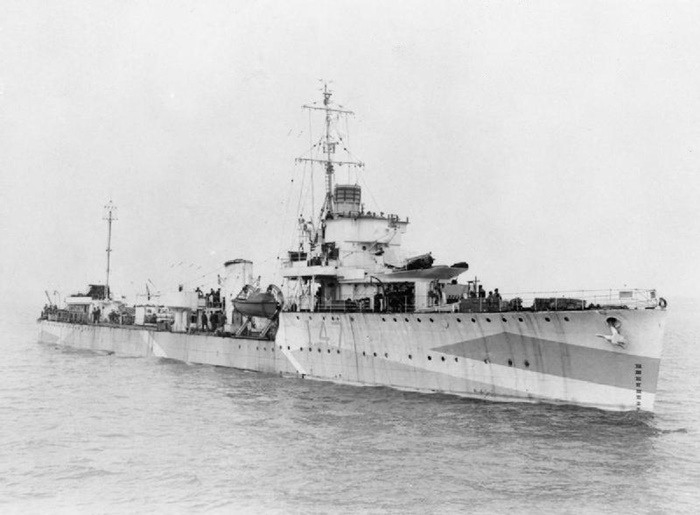
The closest HMS Westcott started a ramming manoeuvre immediately, but missed the U-boat. Because of the proximity to the British destroyer HMS Croome and the neutral territory, the destroyers did not want to open gun fire. However, the destroyer dropped 10 depth charges 10 m to the side of U 581 at this, which probably caused considerable damage to the U-boat. Shortly afterwards, the commander gave the order to abandon and scuttle the boat. After a turn to port, Westcott tried again to ram U 581. The destroyer hit the submarine aft of the conning tower just moments after it was abandoned by its crew. Before the Westcott could start for another ramming, U 581 sank with the stern ahead. Of the 46-man crew, 36 were taken in by Westcott and 5 by Croome. The second watch officer Lt. z. S. Walter Sitek wanted to escape capture and reached the island of Pico, which is about 4 nautical miles away, swimming more than 5 hours later. He was finally brought back to Germany, where he later became a U-boat commander himself. He led the VII C-U-boat U 981 on two patrols. Four crew members of U 581 lost their lives during the sinking. Forty-two years later, the first watch officer Heinrich Ruß thought it possible from memory that they might have been killed by another depth charge thrown over the wreck site by the Westcott. This is not mentioned in any other source or testimony.
In the meantime, U 402 had come nearer and tried to fire torpedoes at the enemy destroyers, but was forced back by them. The small convoy around Llangibby Castle with its German prisoners of war reached Gibraltar on 8 February. On 06 April she left Gibraltar – still with broken rudder – and reached England on 13 April, after travelling 3,400 nautical miles with badly damaged stern and broken rudder, only controlled by the engines. The captain of the Llangibby Castle Ronald F. Bayer was awarded the Commander of the Most Excellent Order of the British Empire (CBE) for this achievement, the 1st Officer J. Fergueson and the Chief Engineer J. Mills the Officer’s Cross (OBE) and the Lloyds War Medal for Bravery at Sea donated by the Lloyd’s of London insurance market.
The fate of the crew in captivity
On 7 March, the crew arrived in England together with the likewise captured crew of U 93 to be interrogated extensively in an interrogation camp near London. They were then transferred to Camp 2 in Oldham, Lancashire near Manchester. In April the crew was brought to Canada by a passenger steamer. Their first prisoner-of-war camp there was Camp 20 in Gravenhurst, Ontario, which became an officer camp four weeks later, so the men were transferred to Camp 133 in Ozada, Alberta. There they had to pitch tents for prisoners of the German Africa Corps. In November, the crew of U 581 was transported by truck in a heavy snowstorm to a camp in Lethbridge, Alberta, where they remained until the summer of 1946. After half a year with a farmer, they were assembled in a camp with other German U-boat crews and brought to England. After further labour service in England, the men of U 581 were released in August 1947 via Munsterlager or Dachau.

The interrogation report of U 581´s crew
During the interrogations of the crew in England, a tense relationship between the officers and the rest of the crew soon became apparent. The non-commissioned officers and crews are even said to have expressed relief at the fact that they were no longer obliged to serve among the officers, whom they hold in low esteem, as a result of the imprisonment. In the view of the interrogators, the crew assumed that their commander had too little combative spirit, which is said to have had a negative effect on the morale of the crew.
The commander would have been very much under the influence of his Chief Engineer, who is called the “evil genius” of the boat. His constant nagging and unnecessarily hard discipline would have caused constant tensions. The Chief Engineer is even said to have banned the crew from listening to music without his express order. There would not have been a petty officer or ordinary crew member who would not have been punished by him.
Sources:
- U-boat data sheets and war diary of U 581
Weblinks:
Buy documents on U 581
Text: Kai Steenbuck – Photos: German U-boat Museum, Imperial War Museum
